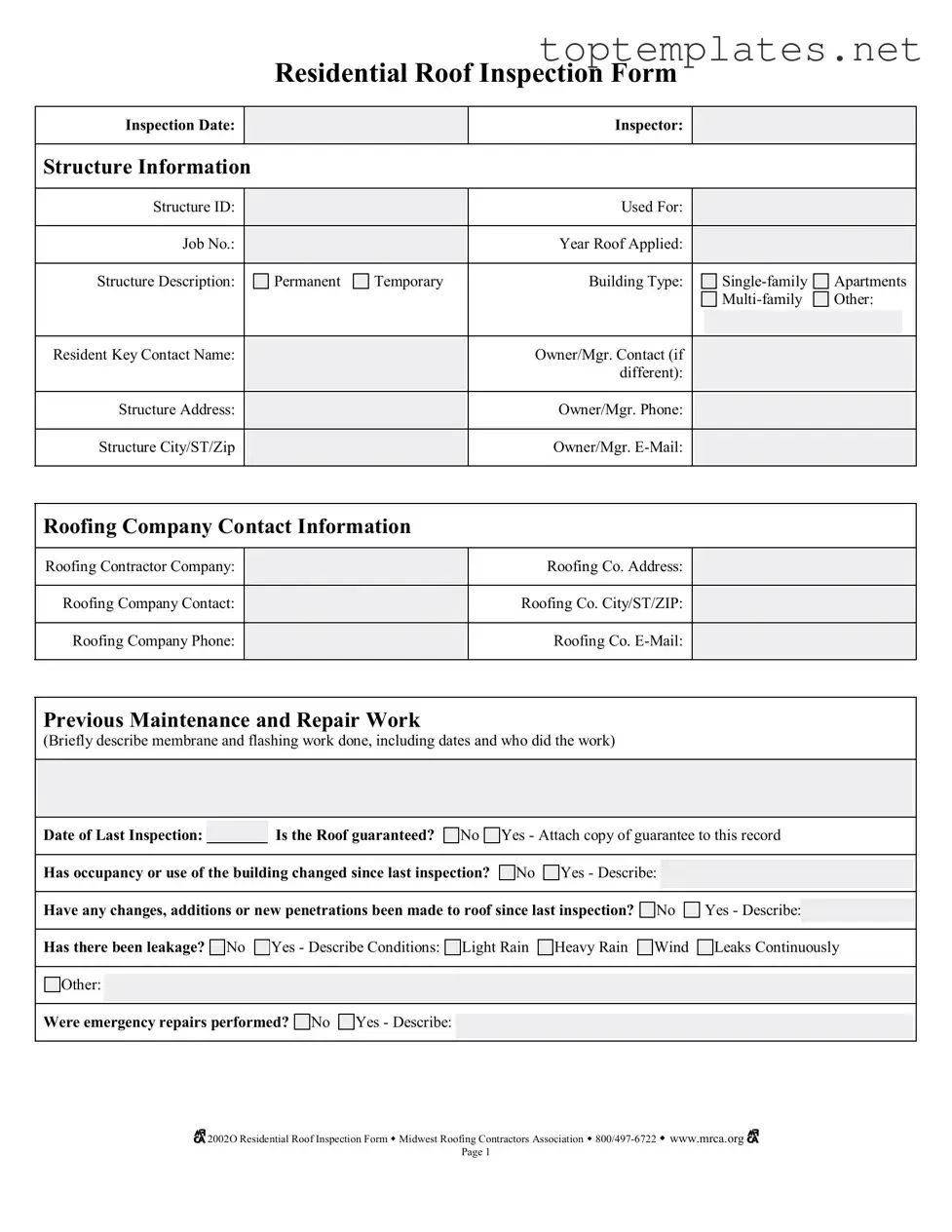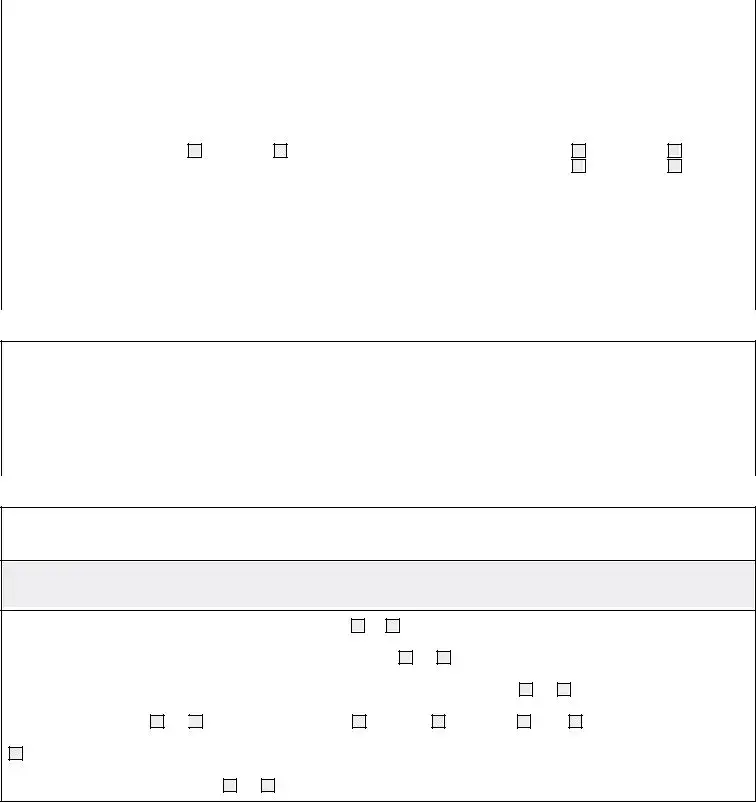What is the purpose of the Residential Roof Inspection Form?
This form is designed to comprehensively assess the condition of a residential roof. It helps in identifying any areas that require maintenance, repair, or immediate attention, ensuring the roof's longevity and structural integrity. By systematically evaluating various aspects of the roof, such as the decking, walls, flashings, membranes, and more, homeowners and professionals can maintain roofs effectively, prevent leakages, and address any damage early on.
How often should a roof inspection be conducted using this form?
It is advisable to conduct a roof inspection at least once a year, or after any significant weather events like heavy rain, storms, or hail, that could potentially damage the roof. Regular inspections help in early detection of potential problems, saving homeowners from costly repairs in the future. For those living in areas prone to severe weather conditions, more frequent inspections may be necessary.
What should be done if the roof inspection form indicates a poor (P) condition rating?
If any section of the roof receives a poor (P) condition rating, it indicates a need for immediate action to prevent further damage. Homeowners should contact a professional roofing contractor to further evaluate the condition and discuss repair or replacement options. Ignoring issues flagged as immediate concerns can lead to significant damage to the property and could potentially compromise the safety of its occupants.
Can changes or repairs be made to the roof without another inspection?
After making any changes, additions, or repairs to the roof, it is crucial to conduct another inspection to ensure these modifications have not adversely affected the roof’s overall condition or violated any warranty agreements. This follow-up inspection can confirm the quality of the work done and identify if additional adjustments are needed.
Is it necessary to hire a professional for the roof inspection, or can a homeowner complete it?
While homeowners can perform a basic visual inspection of their roofs, it is highly recommended to hire a professional roofing inspector for a comprehensive evaluation. Professionals have the training, experience, and tools to safely and accurately assess the condition of a roof, identify potential issues that might not be evident to the untrained eye, and provide expert recommendations.


 2002O Residential Roof Inspection Form w Midwest Roofing Contractors Association w
2002O Residential Roof Inspection Form w Midwest Roofing Contractors Association w 

 2002O Residential Roof Inspection Form w Midwest Roofing Contractors Association w
2002O Residential Roof Inspection Form w Midwest Roofing Contractors Association w 

 2002O Residential Roof Inspection Form w Midwest Roofing Contractors Association w
2002O Residential Roof Inspection Form w Midwest Roofing Contractors Association w 

 2002O Residential Roof Inspection Form w Midwest Roofing Contractors Association w
2002O Residential Roof Inspection Form w Midwest Roofing Contractors Association w 

 2002O Residential Roof Inspection Form w Midwest Roofing Contractors Association w
2002O Residential Roof Inspection Form w Midwest Roofing Contractors Association w 